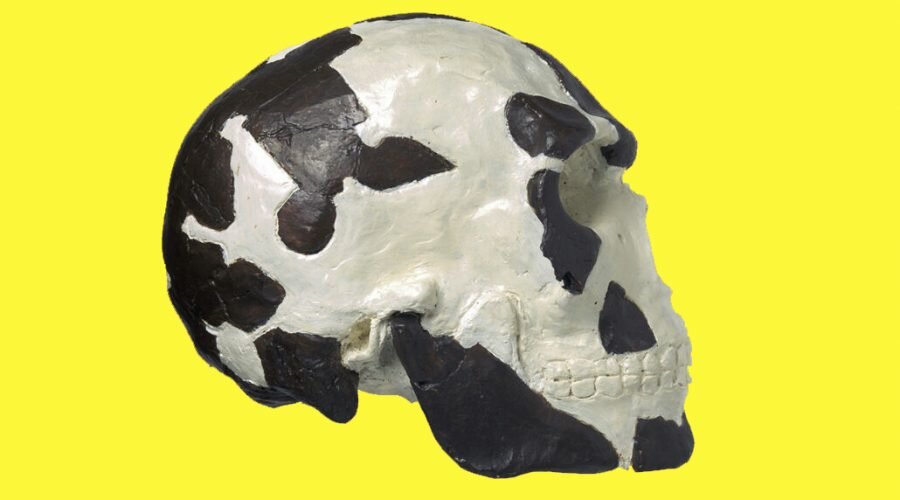Archaeologists have stated that ancient human fossils discovered in Ethiopia are much older than previously thought, saying they may be up to 230,000 years old.
The remains – known as Omo I – were found in Ethiopia in the late 1960s, and scientists have been attempting to date them precisely ever since, by using the chemical fingerprints of volcanic ash layers found above and below the sediments in which the fossils were found.
An international team of scientists, led by the University of Cambridge, has reassessed the age of the Omo I remains – and Homo sapiens as a species. Earlier attempts to date the fossils suggested they were less than 200,000 years old, but the new research shows they must be older than a colossal volcanic eruption that took place 230,000 years ago. The results are reported in the journal Nature.
While this pushes the minimum age for Homo sapiens in East Africa back by 30,000 years, future studies may extend life even further, the team said.

The skeleton of Homo sapiens
discovered by Richard Leakey’s team in 1967
In 2017, researchers announced they had found ancient human remains in Morocco that were dated between 280,000 years to 350,000 years of age.
The skulls found here are more elongated than ours today, with slightly larger teeth, which has led some scientists to suspect these were not Homo sapiens, but rather an ‘archaic’ species of human that spread to North Africa before our more direct ancestors arrived to replace them.
DNA analysis of these ancient Moroccan fossils has not been successful, which means we don’t know how related they are to our own species.
The Omo I remains were found in the Omo Kibish Formation in southwestern Ethiopia, within the East African Rift valley. The region is an area of high volcanic activity, and a rich source of early human remains and artefacts such as stone tools.
By dating the layers of volcanic ash above and below where archaeological and fossil materials are found, scientists identified Omo I as the earliest evidence of our species, Homo sapiens.
“Using these methods, the generally accepted age of the Omo fossils is under 200,000 years, but there’s been a lot of uncertainty around this date,” said Dr Céline Vidal from Cambridge’s Department of Geography, the paper’s lead author. “The fossils were found in a sequence, below a thick layer of volcanic ash that nobody had managed to date with radiometric techniques because the ash is too fine-grained.”
As part of a four-year project led by Professor Clive Oppenheimer, Vidal and her colleagues have been attempting to date all the major volcanic eruptions in the Ethiopian Rift around the time of the emergence of Homo sapiens, a period known as the late Middle Pleistocene.
The researchers collected pumice rock samples from the volcanic deposits and ground them down to sub-millimetre size. “Each eruption has its own fingerprint – its own evolutionary story below the surface, which is determined by the pathway the magma followed,” said Vidal. “Once you’ve crushed the rock, you free the minerals within, and then you can date them, and identify the chemical signature of the volcanic glass that holds the minerals together.”
The researchers carried out new geochemical analysis to link the fingerprint of the thick volcanic ash layer from the Kamoya Hominin Site (KHS ash) with an eruption of Shala volcano, more than 400 kilometres away. The team then dated pumice samples from the volcano to 230,000 years ago. Since the Omo I fossils were found deeper than this particular ash layer, they must be more than 230,000 years old.
“First I found there was a geochemical match, but we didn’t have the age of the Shala eruption,” said Vidal. “I immediately sent the samples of Shala volcano to our colleagues in Glasgow so they could measure the age of the rocks. When I received the results and found out that the oldest Homo sapiens from the region was older than previously assumed, I was really excited.”
“The Omo Kibish Formation is an extensive sedimentary deposit which has been barely accessed and investigated in the past,” said co-author and co-leader of the field investigation Professor Asfawossen Asrat from Addis Ababa University in Ethiopia, who is currently at BIUST in Botswana.
Professor Asfawossen added “Our closer look into the stratigraphy of the Omo Kibish Formation, particularly the ash layers, allowed us to push the age of the oldest Homo sapiens in the region to at least 230,000 years.”
“Unlike other Middle Pleistocene fossils which are thought to belong to the early stages of the Homo sapiens lineage, Omo I possesses unequivocal modern human characteristics, such as a tall and globular cranial vault and a chin,” said co-author Dr Aurélien Mounier from the Musée de l’Homme in Paris. “The new date estimate, de facto, makes it the oldest unchallenged Homo sapiens in Africa.”
The researchers say that while this study shows a new minimum age for Homo sapiens in eastern Africa, it’s possible that new finds and new studies may extend the age of our species even further back in time.
Sources:

